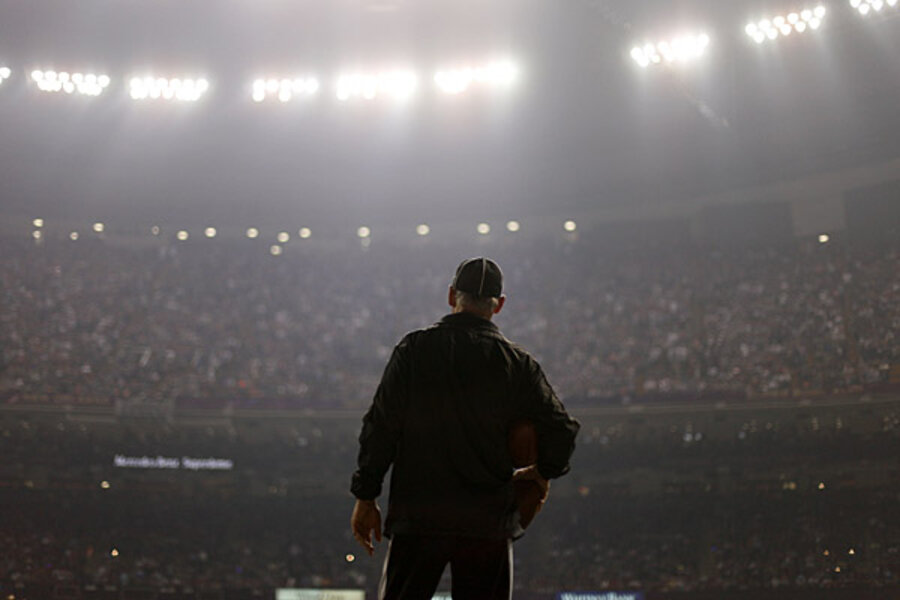Super Bowl outage: Is US ready to address reliability?
Loading...
For most football fans watching the Super Bowl, the half-hour power outage that stopped the game amounted to little more than a weird inconvenience. But as America waited – or took to Twitter to pass the time – the issue of energy reliability was suddenly thrust into center stage. The question now is: Will it stay in the limelight?
The power outage that plunged America's most-watched television event into half light was caused by the failure of a relay. according to Entergy, the utility supplying power to the Superdome, which hosted Sunday's Super Bowl. The equipment was supposed to protect the stadium's electrical supply. It ended up causing an embarrassing delay.
With large outages happening more frequently and the impending retirement of more that 60 gigawatts of fossil-fueled electrical power by 2017, America's electrical grid will be under more stress. Areas of the United States will see their reserve margins of electrical power reduced. Texas, next door to Louisiana, will be hit particularly hard. The Super Bowl outage was not related to these shifts, but it could serve as a wake-up call.
"Ok folks - time to upgrade New Orleans' energy infrastructure maybe?" tweeted Andrew Holland, an energy security analyst and contributor to Consumer Energy Report, during the game.
"A watershed moment for an energy revolution?" asked Tom Kimbis, vice president of strategy and external affairs at the Solar Energy Industries Association, on Twitter.
Bill McKibben, founder of environmentalist group 350.org, offered a dry proposal on Twitter: "Here's a weird idea. What if we played football outdoors? Under the sun?"
Five days after the power failure and an intensive investigation, Entergy took the blame. It said its relay, at the intersection between the company's incoming power line and the lines that feed the Superdome, failed unexpectedly. The utility had been busy in the run-up to the Super Bowl replacing and upgrading equipment e after officials had expressed concerns that the stadium might be subject to an outage similar to a power failure in San Francisco's Candlestick Park during a 2011 nationally televised football game.
The new system performed with no incidents during several high profile events in the Superdome, including January's Sugar Bowl, and was tested repeatedly and successfully in the run-up to the Super Bowl itself, according to Entergy. When it failed during the game, half the lights in the stadium went out, delaying the game for 34 minutes.
The interruption sparked a high-profile discussion about an issue that rarely gets much attention outside of weather-related events.
“It’s possible that such an embarrassing episode during America’s most iconic cultural event, in front of the whole world, will prompt the Congress to get serious about upgrading the U.S. grid and electrical transmission system,” Paul Bledsoe, an independent consultant and former Clinton White House aide, wrote to Politico's Morning Energy.
Environmental regulation, low natural gas prices, and other forces will cause the retirement of some 71 gigawatts of fossil-fueled power capacity by 2022, more than 90 percent of it by 2017, according to forecasts by the not-for-profit North American Electric Reliability Corp. "Reserve margins are likely to be reduced, but to levels that are still above targets. However,retirements over the next three to four years may raise issues related to system stability and the need for transmission enhancements, which if not addressed could cause reliability concerns in some areas."
Texas' generation is in particularly bad shape, with reserve margins falling below recommended levels, the NERC says.
The grid may also become more stressed if powerful storms become more frequent. In 2002, US utilities reported 18 major outages, mostly storm-related, to the US Department of Energy. By 2007, that number had climbed to 49; by 2012, it was 87.







